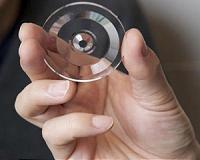 |
London (UPI) Mar 30, 2011 Britain's Defense Science and Technology Laboratory has showcased leading technology that helps helicopters land safely in sandy and dusty destinations, including Afghanistan. Scientists from the laboratory, part of the British Ministry of Defense, have led the technical development of a pioneering approach to a problem they describe as low-visibility landing, otherwise known as helicopter brownout. The phenomenon is said to occur when pilot have their sight disrupted by plumes of dust or sand during landing or takeoff. The project is in conjunction with other industry experts, including AgustaWestland, which helped analyze data on helicopter brownout. "They also conducted a rapid technology assessment of as many available solutions as possible including simulator trials of one of the most promising technologies: three-dimensional conformal symbology," the Defense Ministry said in a statement. The technique, experts explained, includes a small helmet-mounted display that feeds a virtual 3-D representation of the landing zone and stays fixed to the Earth as the aircraft is landed in sandy or dusty areas. The technology was showcased at an industry event at the Honorable Artillery Company in central London as part of the government's National Science and Engineering Week. There was no indication as to the cost of the research or the cost of the new technology that could ease British helicopter operations in Afghanistan. The Defense Ministry said the technology was being carefully designed to "augment the real-world picture but also to provide all relevant information to allow the pilot to easily judge height, speed and drift," in landing or takeoff mode. "It then replaces the real-world cues when they are obscured by dust," affording even 24-hour capability with night vision offered by the technology. "Brownout is a dangerous problem faced daily by U.K. helicopter crews in Afghanistan, when you come in to land the amount of dust blown up can completely obscure all visual references," said Maj. John Peters of British army air corps, lead test pilot for the program. "This makes landing more difficult and dangerous and increases the risk of damage. The development of the low-visibility landing system will allow helicopter crews to land much more safely in these conditions, giving them references when they would otherwise be blind." The Defense Science and Technology Laboratory has conducted flight trials in a Lynx helicopter in Hampshire. The team also conducted additional simulator trials using front-line Merlin chopper crew to refine the solution and conduct a large number of helicopter takeoffs and landings to confirm that the system does facilitate helicopter pilots, the ministry said.
Share This Article With Planet Earth
Related Links Space Technology News - Applications and Research
 Seeing In Stereo: Engineers Invent Lens For 3-D Microscope
Seeing In Stereo: Engineers Invent Lens For 3-D MicroscopeColumbus OH (SPX) Mar 28, 2011 Engineers at Ohio State University have invented a lens that enables microscopic objects to be seen from nine different angles at once to create a 3D image. Other 3D microscopes use multiple lenses or cameras that move around an object; the new lens is the first single, stationary lens to create microscopic 3D images by itself. Allen Yi, associate professor of integrated systems engi ... read more |
|
| The content herein, unless otherwise known to be public domain, are Copyright 1995-2010 - SpaceDaily. AFP and UPI Wire Stories are copyright Agence France-Presse and United Press International. ESA Portal Reports are copyright European Space Agency. All NASA sourced material is public domain. Additional copyrights may apply in whole or part to other bona fide parties. Advertising does not imply endorsement,agreement or approval of any opinions, statements or information provided by SpaceDaily on any Web page published or hosted by SpaceDaily. Privacy Statement |